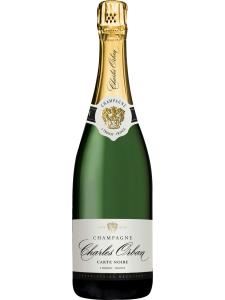Champagne Brut is dry, sparkling wine from the Champagne region of northern France. Champagne of any color can be brut, both the standard white and Rosé. It is made from the classic Champagne Blend (typically Chardonnay, Pinot Noir and Pinot Meunier) but in theory can also include the four lesser-known Champagne varieties: Pinot Blanc, Pinot Gris, Petit Meslier and Arbane.
The French word brut translates roughly as 'raw', and in this sense it indicates a wine bottled in its natural, raw state – i.e. without a significant addition of sweetness (dosage). In practice, almost all brut Champagnes do receive a small addition of sweetness prior to final bottling. Nowadays, the terms "brut nature" and "zero dosage" are used to indicate champagnes with no dosage at all. See Brut Nature.
The laws governing Champagne wine labels define brut wine as "containing less than 15 grams per liter of sugar". This same definition is reflected in E.U. law, and applies to sparkling wines from all European countries. In non-sparkling wines, which lack Champagne's sparkle and high acidity, this much sugar would leave the wine perceptibly sweet.
The brut style was pioneered by top-end Champagne house Perrier-Jouet in the mid-19th Century, originally for their extensive market in England. The 1846 vintage marked the beginning of a new era; in that year Perrier-Jouet took the brave decision not to add any sugar to their wines destined for the English market. Prior to this, Champagne had always been sweetened, but the drier, unsweetened style soon gained in popularity. Technically speaking, what Perrier-Jouet created would now be defined as Brut Nature.
In the late 20th and early 21st Centuries, dry, white, brut Champagne has become the default. It is now vastly more popular than sweeter styles such as Sec, Demi-Sec and Doux.
The other official Champagne sweetness levels:
- Doux (50+ g/L)
- Demi-sec (33–50 g/L)
- Sec (17–35 g/L)
- Extra-Sec (12–20 g/L)
- Brut (0–12 g/L)
- Extra Brut (0–6 g/L)
- Brut Nature/Zero (0–3 g/L).
To learn about Champagne history, and how Champagne is made, see Champagne.


